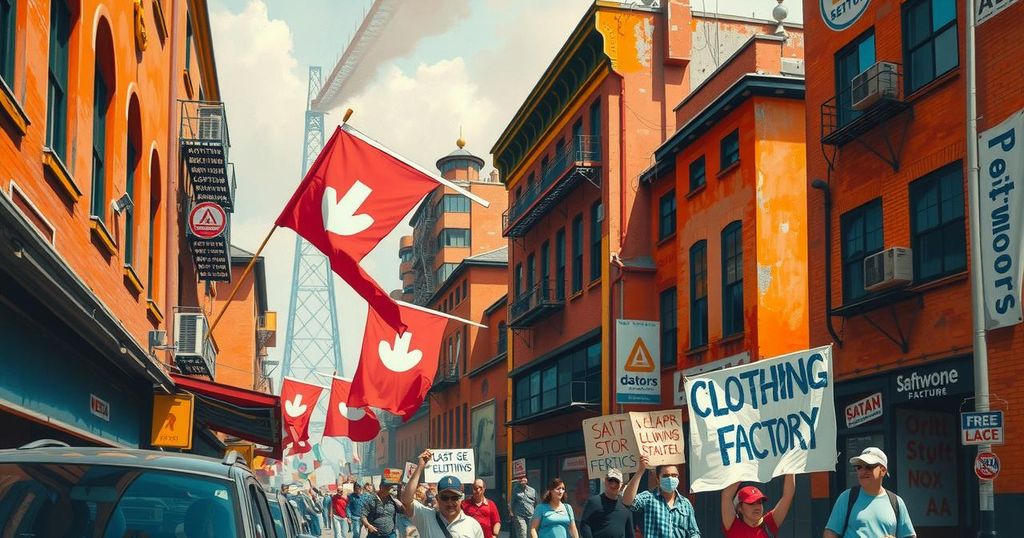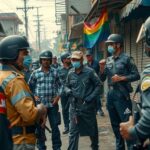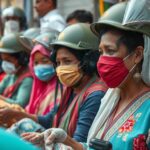Clashes Erupt in Dhaka Amid Garment Workers’ Protests Over Layoffs
On October 31, Bangladeshi garment workers protested layoffs in Dhaka, clashing with police and resulting in injuries to two teenagers. The garment sector, vital to Bangladesh’s economy, has faced significant unrest due to recent factory closures. Ongoing protests reflect deeper issues within the industry amid political instability, leading to demands for job security and better wages.
On October 31, 2024, garment workers in Dhaka, Bangladesh, protested job layoffs, leading to violent clashes with police and soldiers. Officers reported that two teenagers, aged 15 and 17, were wounded during these confrontations. Thousands of workers marched in the Mirpur area, voicing their anger over factory closures which have significantly impacted the garment sector that constitutes 85 percent of the nation’s annual exports worth $55 billion.
Bangladesh ranks as the second-largest clothing exporter in the world, following China, and is a supplier for major international brands, including Levi’s, Zara, and H&M. According to Mohammed Faruq, a police officer at Dhaka Medical College, the wounded teenagers are currently receiving medical treatment. Mohammad Abdur Rahman, whose son Al Amin was among the injured, expressed confusion and anger over the police response during the protests.
Kazi Golam Mostofa, the officer commanding in Mirpur, indicated that unrest followed the sudden closure of a factory amid ongoing tensions. “Workers from all the garment factories in the Mirpur area joined the protest,” he noted. Past protests have also brought about fatalities, including a recent incident where a garment worker was killed.
The current unrest reflects a broader context of instability following the student-led protests against the former autocratic government. The interim administration led by Nobel laureate Muhammad Yunus is facing ongoing demonstrations, with garment workers demanding improved job security and wages, as financial losses from the unrest have approached $400 million since August.
The clashes between garment workers and police in Dhaka highlight the escalating tensions in Bangladesh’s vital garment sector, driven by job losses and factory closures. As protests have turned violent, with injuries reported and tensions ongoing, the future of the industry remains uncertain. Immediate measures are essential to address the grievances of workers and restore stability, particularly as the industry plays a crucial role in the nation’s economy.
Original Source: www.heraldmalaysia.com








Post Comment